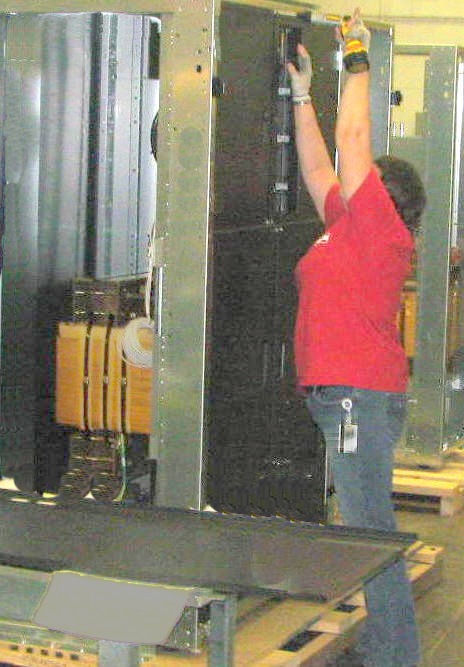 |
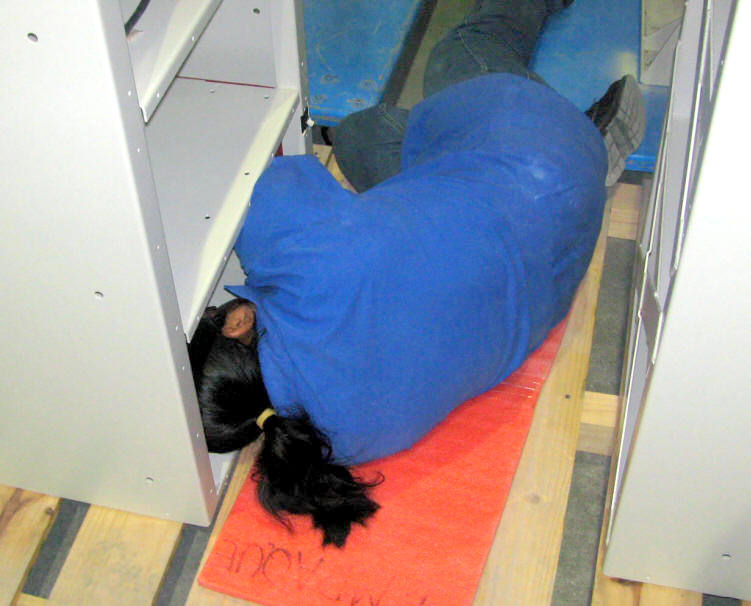 |
| High reach | Low bend |
Background
Assembly of large metal cabinets of various types can be unwieldy because of their size, often creating very high reaches as well as low bends. This page contains photos of improvements in a number of assembly plants, which may provide ideas and guidance to other facilities with similar issues.
Ideas and Options
PANEL HANDLING
Vertical orientation
 |
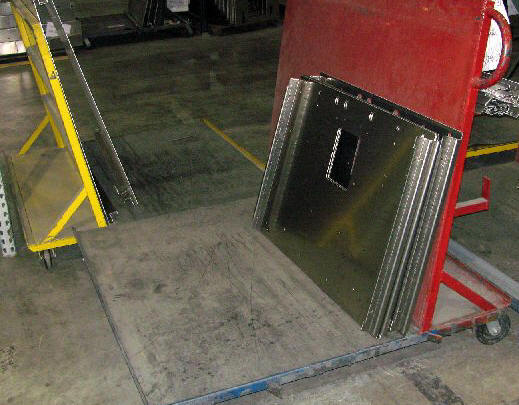 |
| Horizontal storage – harder | Vertical storage – easier |
Most plants store and stage panels in both a horizontal orientation and a vertical orientation. Normally the vertical orientation is better, since it reduces the time and effort needed to lift the panel. Changing to vertical orientation is typically easy and inexpensive, plus often has the additional advantage of reducing the footprint of the stored panels.
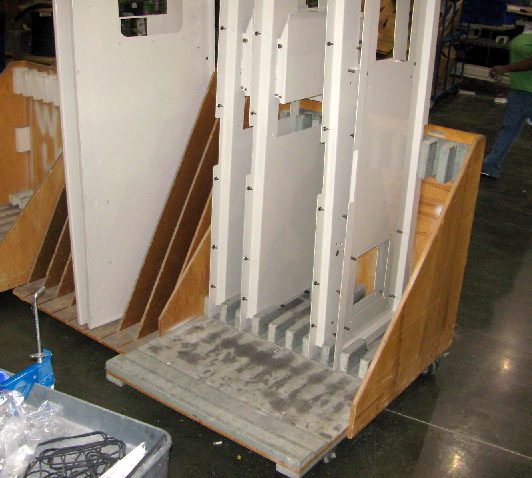 |
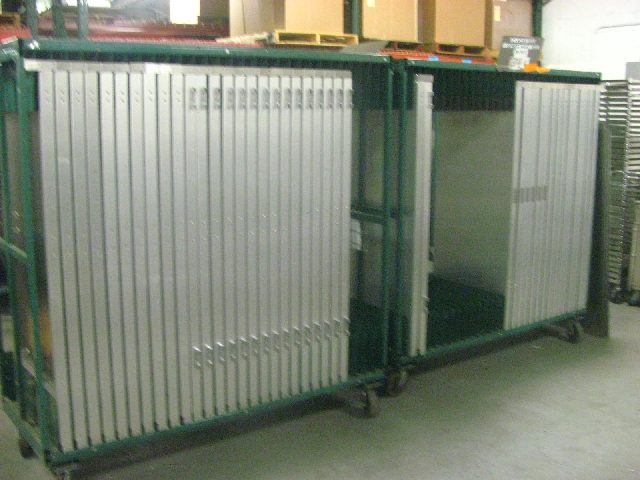 |
| Panel carts | |
Many styles of vertical panel carts have been developed through the years in different plants. There does not appear to be any particular cart design that is best, although the version shown above left provides more open access to the panels. (See also Work Area Storage for more generic information.)
Slide method
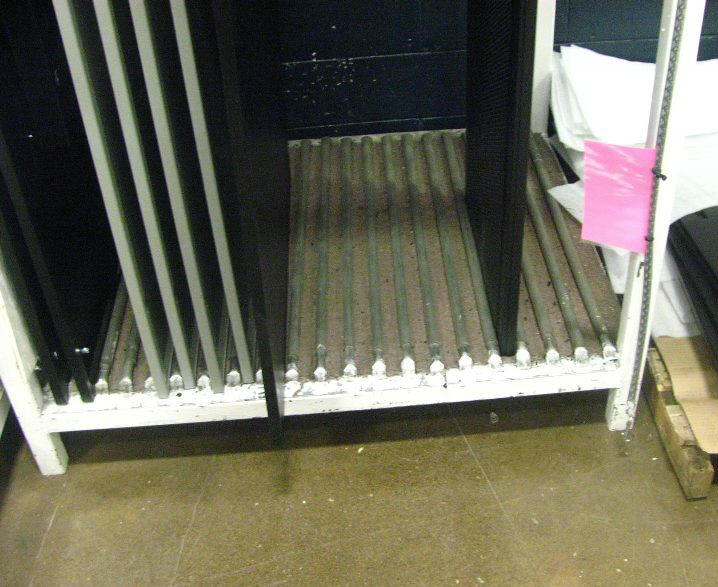 |
 |
| Panel cart | Two-person lift |
The two above photos show how panels are commonly lifted and carried from the storage rack to the cabinet being assembled. The panel storage rack itself was fine, but there was a gap between the rack and the point of use.
 |
 |
| Temporary experimental slide | Testing the slide — one person, no lifting |
During an ergo kaizen at the above plant, the team successfully experimented with using a small slide to bridge the gap between the storage rack and the cabinet. The rack floor and the cabinet were roughly the same height, so it was relatively easy to use the black platform shown above as a bridge and a slippery sheet of gray plastic as the sliding surface. One person was able to slide the panel into position without lifting.
Note: A good rule of thumb is that it is almost always better to slide a load than it is to pick it up and put it down. Generally, slides are very inexpensive, yet effective. (See also Slides for more generic information.)
Vacuum hoists
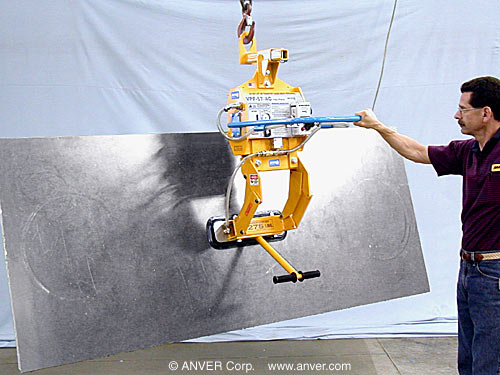 |
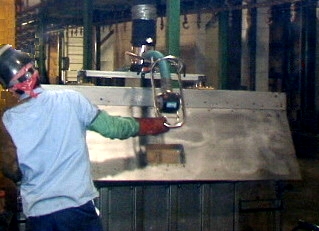 |
| Tiltable vacuum hoist for sheet metal (www.anver.com) | Vacuum hoist used for heavy steel cabinets |
Vacuum hoists have seen considerable development in the past decade. The hoists are usually easier to manipulate either because the vacuum hoses are generally smaller or because the vacuum pump is integrated with the the grabber, thus eliminating the need for a hose. The grabbers (or “end effectors”) are now available in multitudes of configurations, including tiltable versions that are suitable for handling sheet metal.
 |
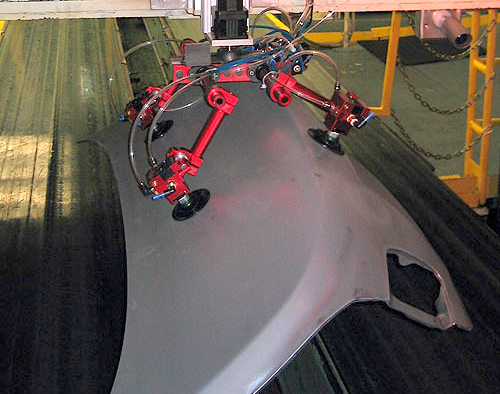 |
| Multiple vacuum cups | |
The grabbers can designed with multiple vacuum cups, which may be helpful for handling cabinets that have not yet been fully welded or fastened and thus too flimsy for a single larger vacuum grabber. (See also Hoists for more generic information.)
Technique for lifting panel tops
 |
 |
| Before: Two-person lift of heavy top panel | |
A problem in this facility was lifting the heavy top panel up into position. The work required the employees to hold the panel above shoulder height while simultaneously stepping up onto a three-step work platform.
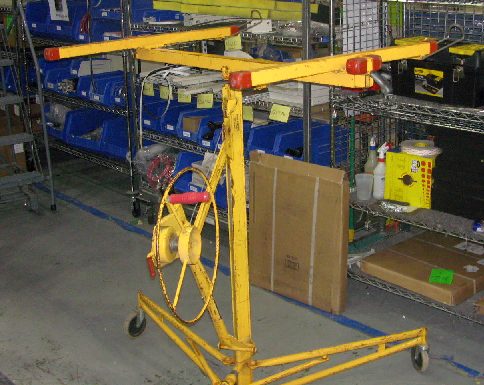 |
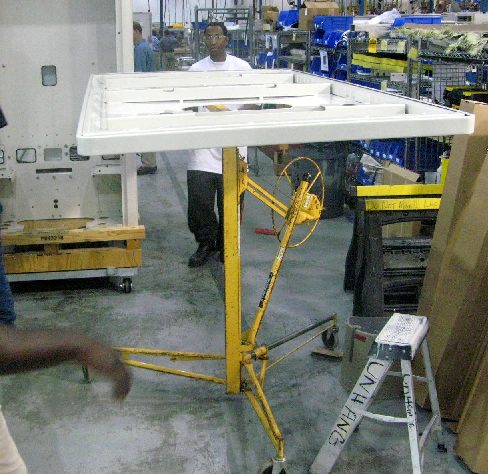 |
| After: Drywall lift used to position the panel | |
During an ergo kaizen at this plant plant, the team successfully experimented with a drywall lift to raise the panel into position. The drywall lift tilts 90 degrees so that the panel can be placed vertically, then rotated to this horizontal orientation. The local industrial supplier provided a test unit within a day.
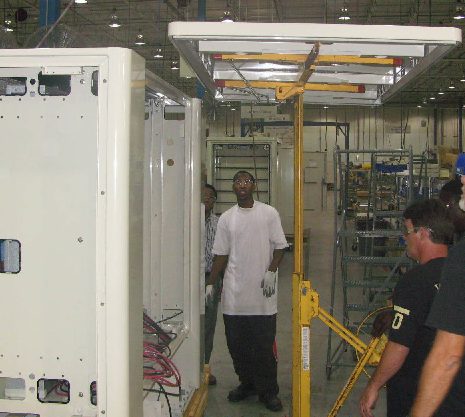 |
 |
| Drywall lift raises the top panel up | Employees slide the panel into position |
Subsequently, the company purchased a better drywall lift and then modified it for this purpose. The improvement shows good creativity and a willingness to try unconventional ideas, which provides inspiration to all plants, whether this particular solution is applicable or not.
CABINET HANDLING (at workstation)
Scissors Lifts
 |
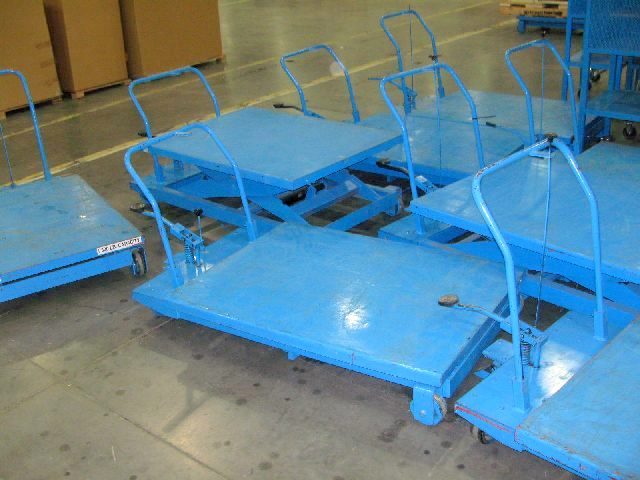 |
| Scissors lift carts (foot pump) | |
A good way to raise and lower cabinets is to place them on scissors lifts. These lifts can be portable or stationary, as needed. Some versions have foot pumps to adjust the height while other versions are powered. The powered ones are better, but more expensive. Foot pump styles can be acceptable if the need for adjustment is minimal.
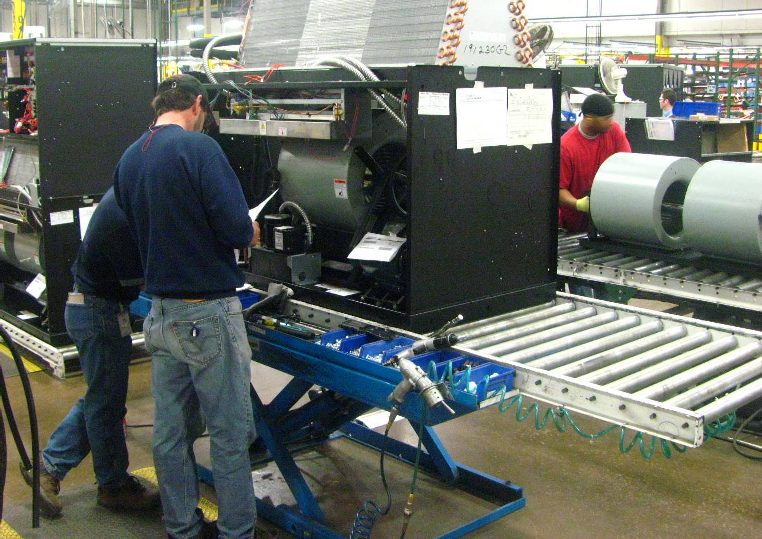 |
 |
| Powered scissors lift built into conveyor line | Powered scissors lift on casters |
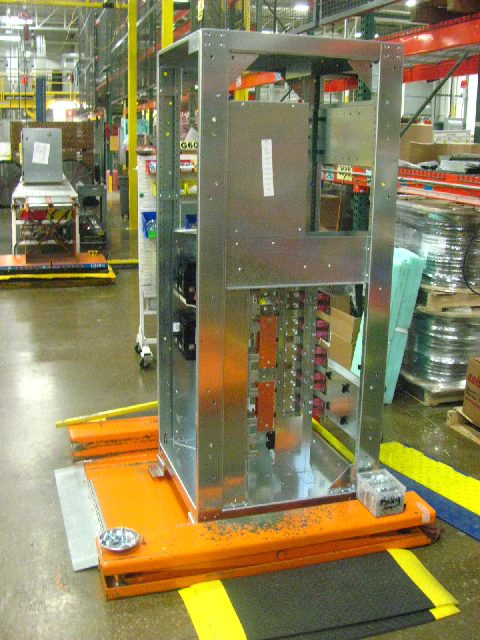 |
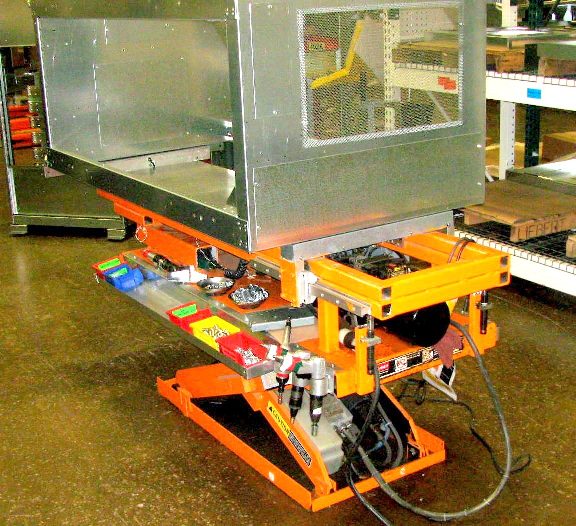 |
| More examples of powered lifts | |
Scissors lifts are available in countless styles and configurations. (See also Lifts for more generic information.)
Upenders
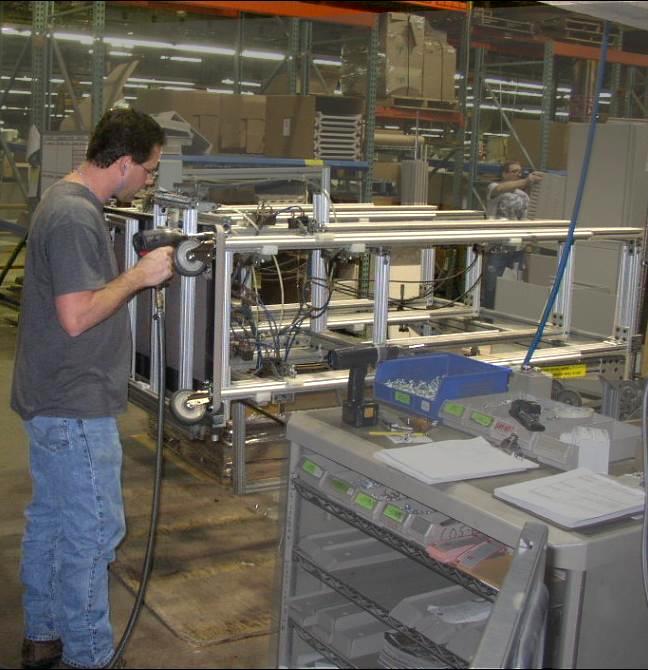 |
 |
| Upender used to attach wheels on cabinet | |
Upenders provide a relatively inexpensive way to rotate cabinets at any angle on a single axis. As with scissors lifts, upenders are available in many configurations, plus can be fabricated in-house to fit almost any need.
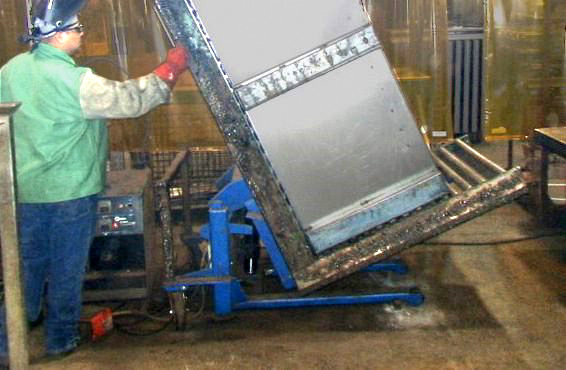 |
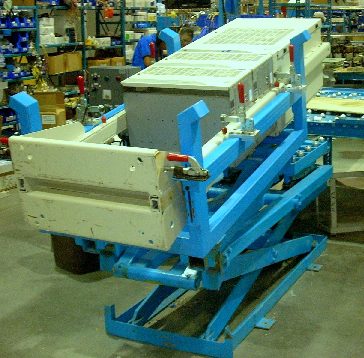 |
| Upender integrated into conveyor line | Upender combined with scissors lift |
Trunnions
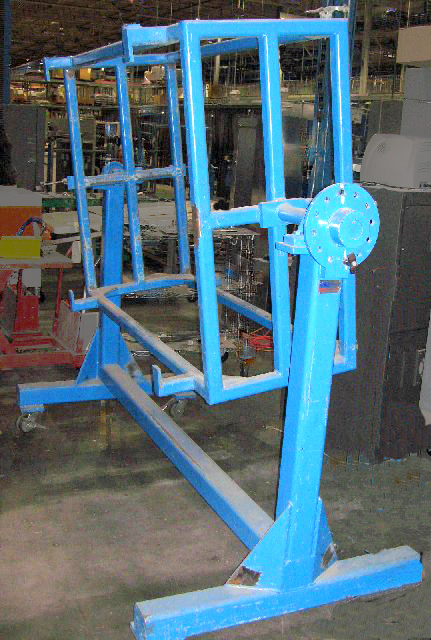 |
 |
| Trunnion (empty) | Trunnions incorporated into carts |
A trunnion is a stand that allows a fixture to be rotated. The above examples show their use for assembly of large cabinets.
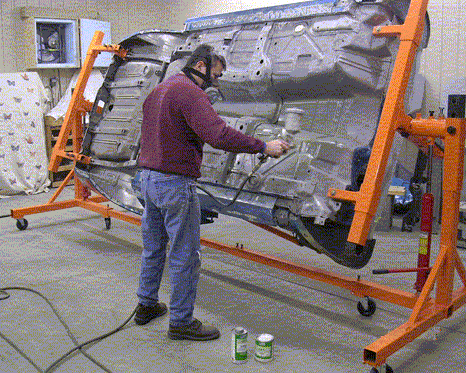 |
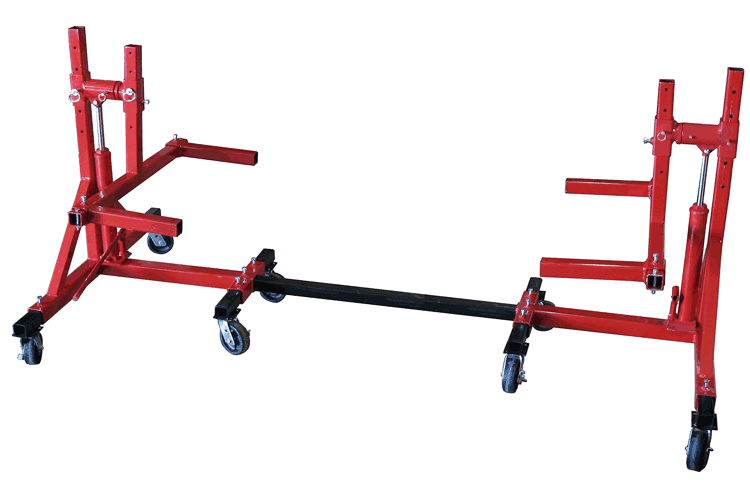 |
| Car rotisseries | |
Trunnions are usually built to order but can now be purchased off the shelf because of the recent evolution of “car rotisseries” used in body shops. Some versions are adjustable for different lengths of vehicles. (See www.car-rotisserie.com and www.chassisliner.com and also Floor-based fixtures for more generic information.)
Manipulator
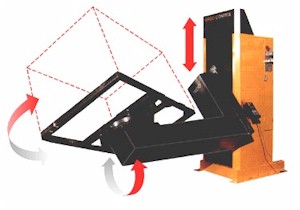 |
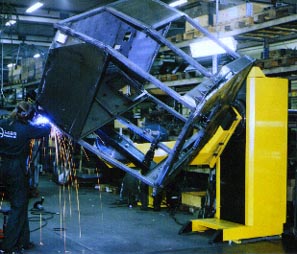 |
| Large manipulator –www.ergotechinc.com | Programmable manipulator used for welding farm equipment cabs |
Large programmable manipulators may be an option for cabinet assembly. Developed in the 1980s by SAAB for car engine assembly, they provide the advantage of positioning heavy objects in three-axes.
WORK PLATFORMS
Standard
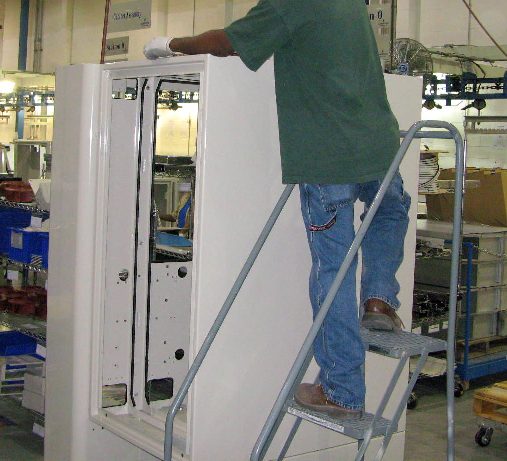 |
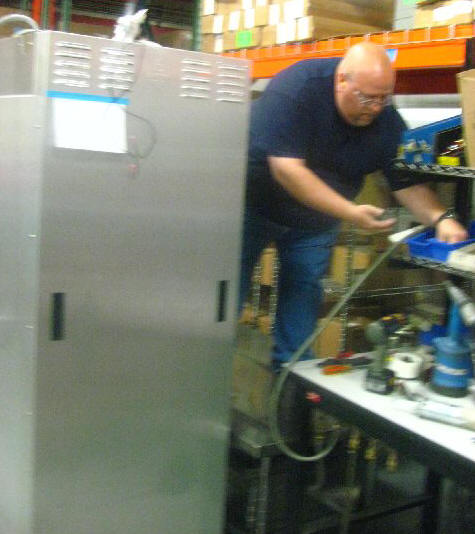 |
| Stepper | Bending to get tools |
The standard small step platforms can be valuable for working on the upper portions of a cabinet. However, there can be shortcomings depending upon the situation.
Above left, climbing up and down steppers, especially when carrying tools and materials, can create concern for falls as well as wear-and-tear on knees.
Above right, the employee is standing on a small platform, bending down to get parts from workbench that is located at floor level.
In both of these examples, efficiency is also lowered because of the need to either climb up and down or bend to reach items.
Large area
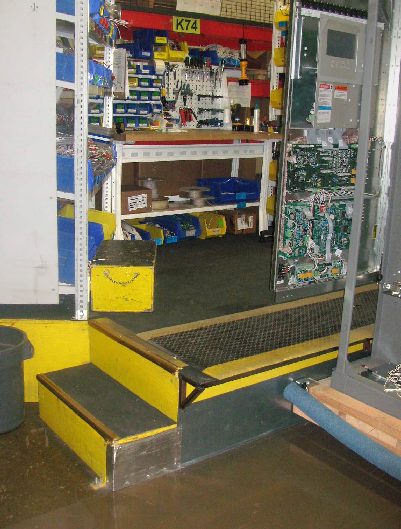 |
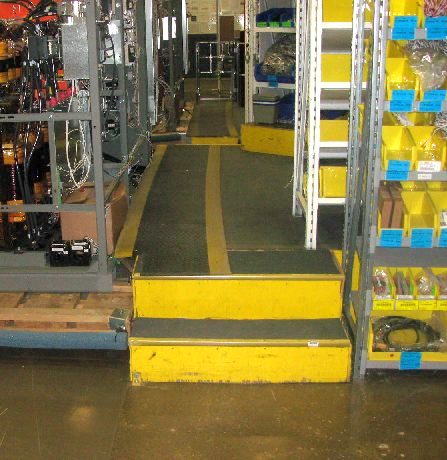 |
| Two views of the same large area platform | |
An alternative to steppers and small platforms is to create a platform with a large enough area to hold all tools and materials, equivalent to working at floor level. This approach (a) minimizes the times that an employee needs to go up and down the steps and (b) enables all the needed tools and materials to be placed as if at floor level.
Powered
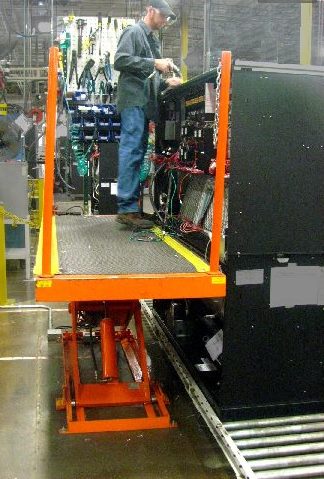 |
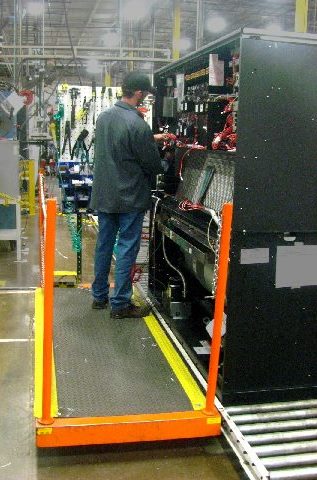 |
| Platform mounted on scissors lift | |
A different option that is beginning to become common throughout general industry is to use powered lifts, since they surmount a number of shortcomings of other platforms:
- The platform can be adjusted with precision to any height.
- Repetitive use of steps is eliminated, saving both time and strain on knees.
- Tool racks can be mounted on the platform, which saves time and effort.
- No bending, lifting, or manual cranking.
- Guard rails can easily be incorporated.
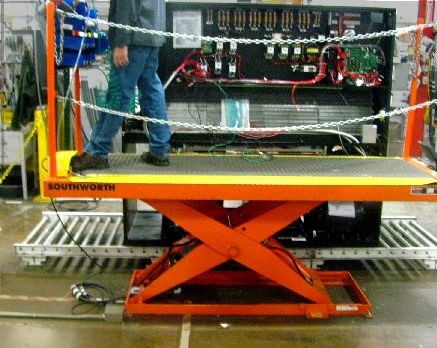 |
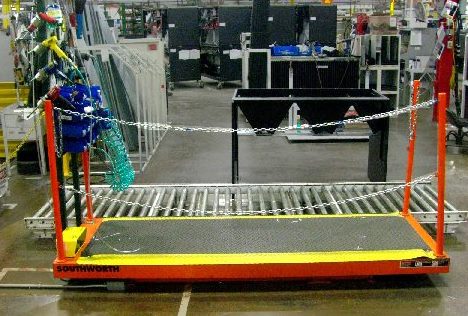 |
| Another view of same scissors lift platform | |
(See also Work Platforms for more generic information and ideas)
MISCELLANEOUS
Air casters
 |
| Air casters replaced standard wheels for the production line of a very heavy cabinet |
Air casters are becoming more common in general industry because, compared to standard wheel casters, they are easier to move heavy items on the floor and position precisely. (See also Air casters for more generic information.)
Clearance on cabinet dollies/pallets
 |
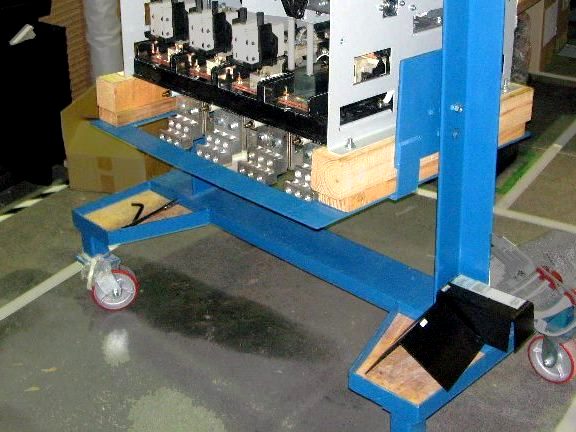 |
| Issue: No room for legs, creating long reach and awkward working position | Trunnion cart designed with good leg clearance. |
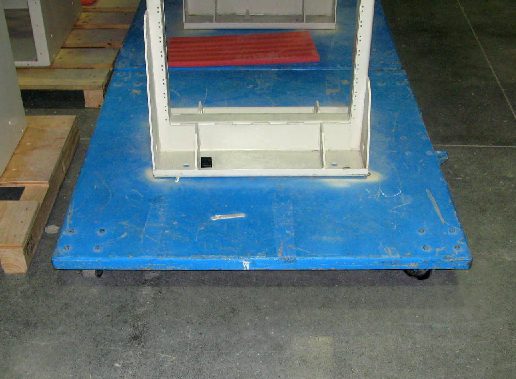 |
 |
| Before: No room for legs, long reach | After: Cut out for leg clearance (in process at time of photo) |
Leg clearance can be an issue on supports for cabinets as shown in these photos. The solutions are usually easy and inexpensive when the dollies or carts are being designed and ordered. Retrofits can also be relatively inexpensive, often simply by cutting out a section of the dolly surface.
